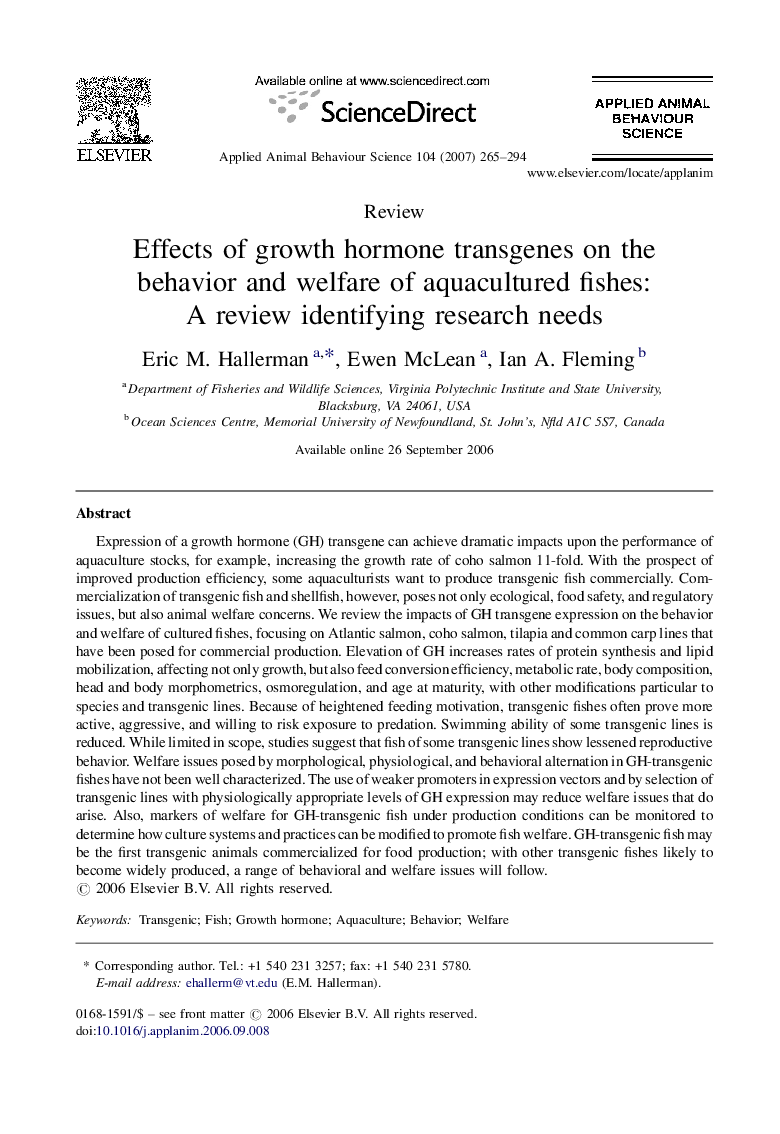| کد مقاله | کد نشریه | سال انتشار | مقاله انگلیسی | نسخه تمام متن |
|---|---|---|---|---|
| 4523958 | 1625433 | 2007 | 30 صفحه PDF | دانلود رایگان |

Expression of a growth hormone (GH) transgene can achieve dramatic impacts upon the performance of aquaculture stocks, for example, increasing the growth rate of coho salmon 11-fold. With the prospect of improved production efficiency, some aquaculturists want to produce transgenic fish commercially. Commercialization of transgenic fish and shellfish, however, poses not only ecological, food safety, and regulatory issues, but also animal welfare concerns. We review the impacts of GH transgene expression on the behavior and welfare of cultured fishes, focusing on Atlantic salmon, coho salmon, tilapia and common carp lines that have been posed for commercial production. Elevation of GH increases rates of protein synthesis and lipid mobilization, affecting not only growth, but also feed conversion efficiency, metabolic rate, body composition, head and body morphometrics, osmoregulation, and age at maturity, with other modifications particular to species and transgenic lines. Because of heightened feeding motivation, transgenic fishes often prove more active, aggressive, and willing to risk exposure to predation. Swimming ability of some transgenic lines is reduced. While limited in scope, studies suggest that fish of some transgenic lines show lessened reproductive behavior. Welfare issues posed by morphological, physiological, and behavioral alternation in GH-transgenic fishes have not been well characterized. The use of weaker promoters in expression vectors and by selection of transgenic lines with physiologically appropriate levels of GH expression may reduce welfare issues that do arise. Also, markers of welfare for GH-transgenic fish under production conditions can be monitored to determine how culture systems and practices can be modified to promote fish welfare. GH-transgenic fish may be the first transgenic animals commercialized for food production; with other transgenic fishes likely to become widely produced, a range of behavioral and welfare issues will follow.
Journal: Applied Animal Behaviour Science - Volume 104, Issues 3–4, May 2007, Pages 265–294